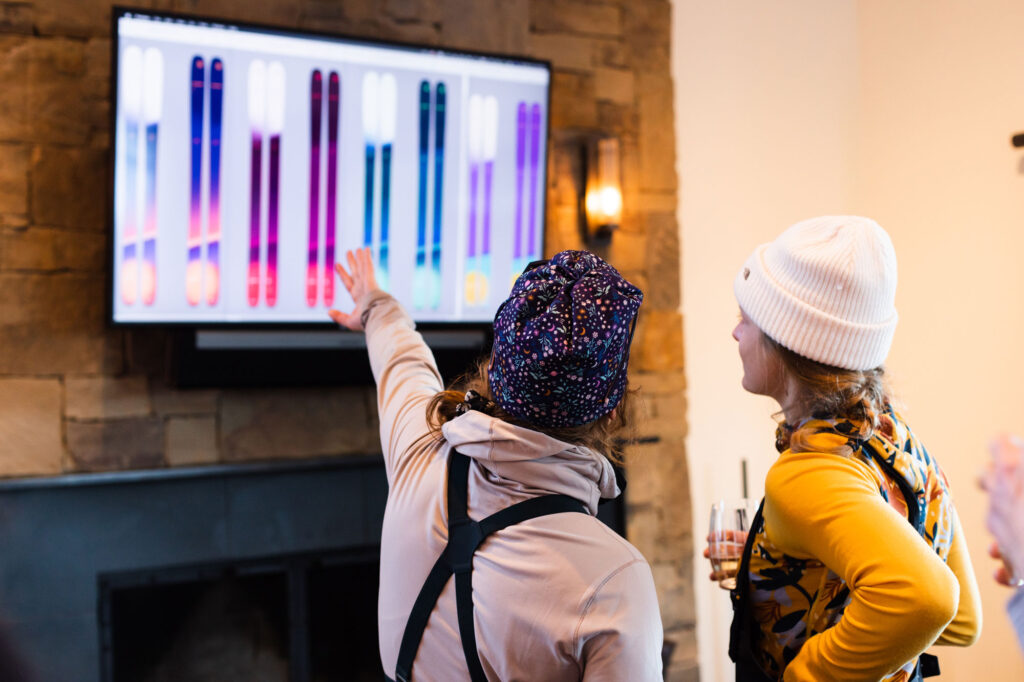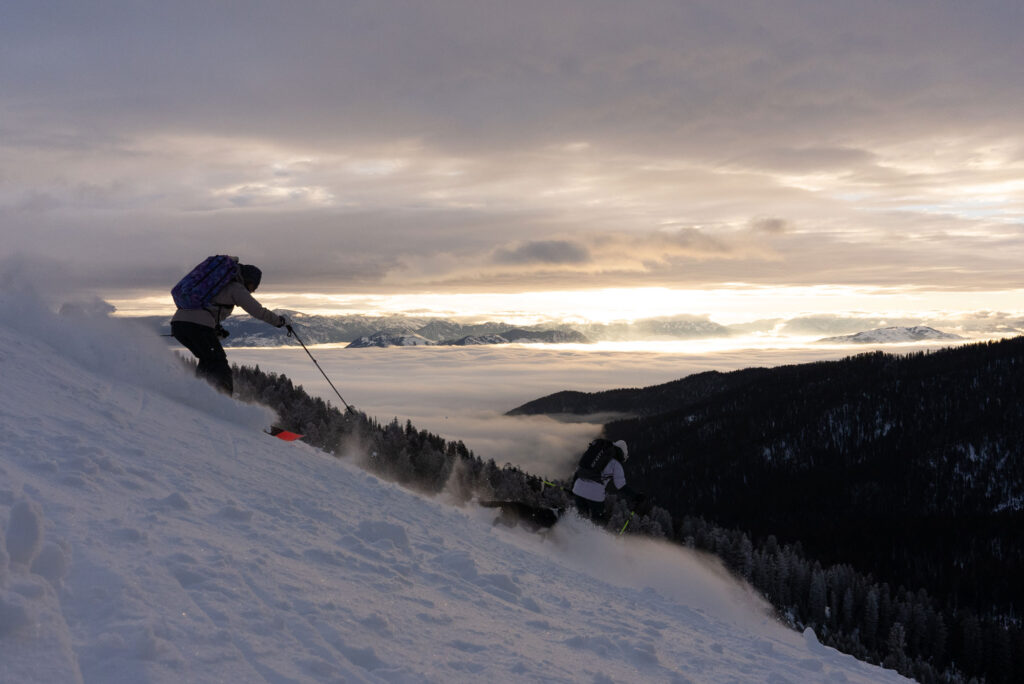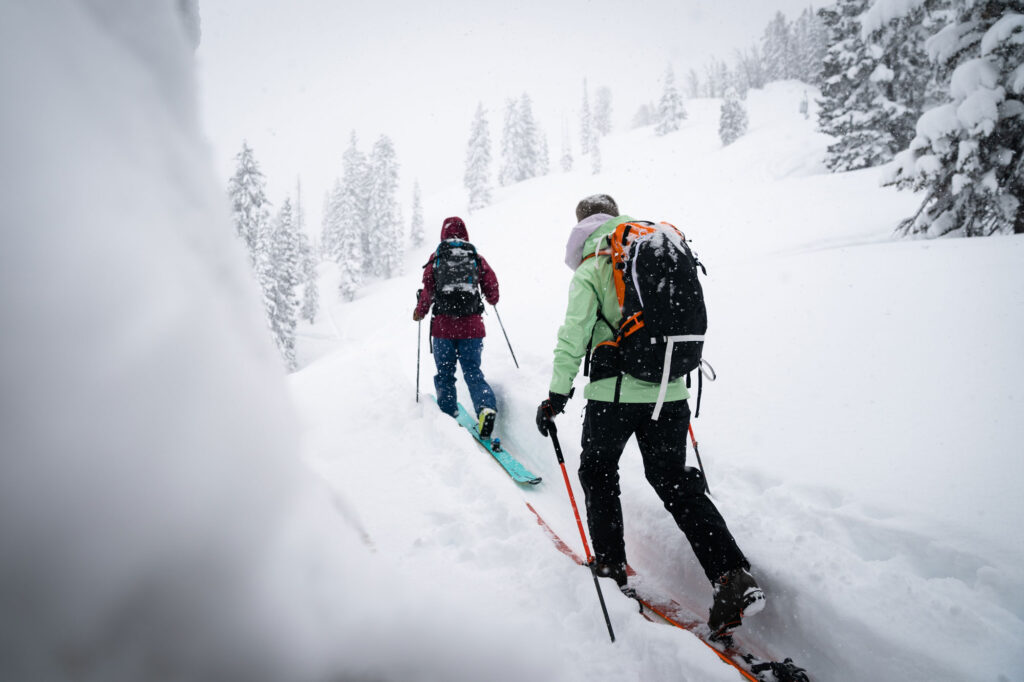Why Blizzard/Tecnica Is Winning Women
It’s a cold, clear afternoon in December, and seven or so women—most of whom are heavy hitters in the ski industry—are sitting around the living room in Keystone, Colo., after testing some prototypes on the hill. There are snacks, of course, and a pitcher of aperol spritzes—it is après, after all—stirred up by Sam Tischendorf, a bootfitter out of Telluride.
We’re all there as part of Blizzard Tecnica’s Women2Women program, a focus group put together in 2015 to help the brands address women’s needs. It’s championed by global W2W leader and former competitive racer Leslie Baker-Brown, and includes athletes, retailers, journalists, women who just love to ski. The goal includes making better gear for half of the skiing population that’s been underserved since the sport was a thing, but it’s more than that. The W2W project has four pillars: product, education, inspiration, and community.

Part of that educational mission means analyzing and rethinking the way women buy gear, too. It doesn’t take a degree in data science to discern that most of the people who design, make, tune, and sell ski gear are men. Any woman who’s ever walked into a ski shop will tell you it can be a very intimidating experience. And, according to research the brand has done about how women buy gear, they’re far less likely to do the research on new technology than their male counterparts, which means they’re less confident about what they want and why.
According to Tracy Gibbons, president of the Northwest division of Christy Sports and also part of the W2W focus group, women are far more driven by the benefits vs the technology, so they often don’t know the terms the shop folks are trained to use. “They come in and say, ‘I want this ski to help me be a better powder skier,’” she says. “They don’t care if it has metal or wood or basalt.” Men, however, want to hear all the technology and engineering, i.e., what the rocker profile is, and what the core is made out of.

This is where a little knowledge of shop talk is hugely important. “It’s like me going in to buy a computer,” Gibbons says. “I say I want a nice picture and want it to be fast. I don’t know the tech talk, but I know what it needs to do for me. But understanding the terms that the shop guy is going to use helps.”
Another issue is that women routinely downplay their abilities. This is a thing called “the confidence gap”—and it happens everywhere, from the office to the ski shop. According to data from Snowsports Industries of America, just 13% of skiers who identify themselves as “experts” are women. Clearly, this is not accurate. So when women walk into the ski shop and modestly underestimate their abilities, the ski-shop dude will likely put them in soft, cheap, foam-core models that won’t support any athletic growth.

All of this adds up to women frequently not being in the gear best-suited for them. BlizzTec intends to do everything it can—and is investing significantly—to empower women to make their own decisions. To that end, the brands have hosted happy hours at ski shops across the country to help educate women about everything from technology to technique. Their website also has a host of articles that include tips on everything from how to put a ski on in deep snow to how to make the most efficient kick-turn while touring. They also created a scholarship program to support women who want to further their backcountry skiing education.
Of course, women still have a long way to go to have equal representation in the ski world, making up a tiny fraction of the gear industry workforce. We need more—or in some cases any—women on the shop floor, in the tuning room, in the avalanche education classroom, on the R&D teams, in guiding positions, and in leadership roles. “The Women2Women program has boosted me in feeling like I have some leadership,” Baker Brown says. “We have other women in our office, but they’re in customer service or accounting. But in terms of women who are market-facing on the hardgoods side, there’s still just me.”
The good news, though, is that BlizzTec’s W2W program is working, evidenced by sales numbers alone. Blizzard’s Black Pearl ski model, for example, has been the No. 1 selling ski—across both men’s and women’s models—for five or six years now. This is a direct result of afternoons spent just like this one, with a bunch of women sitting around and giving immediate feedback to the people responsible for designing and producing their gear.
“We are taking a 360-degree approach to what women skiers need,” Baker Brown said. “That includes gear, of course, but also inspiration, education, and community, too.”
Kimberly Beekman is the former editor-in-chief of the late Skiing Magazine (RIP). She now uses freelance writing as a beard to ski powder anywhere it falls. She lives in Denver with her wonderful daughter and terrible cat.


